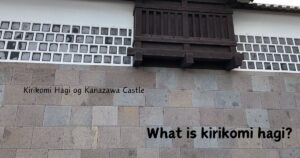“reconstructed tenshu” refers to the practice of rebuilding a historically significant tenshu (the main defensive tower or keep of a Japanese castle) that was lost due to war, natural disasters, or decay, in more recent times.
These reconstructions are often based on the original designs of the tenshu and are undertaken with the aim of preserving historical value and cultural significance for future generations.
Reconstructed tenshu serve various roles, including promoting tourism, providing historical education about the area, and acting as symbols of regional pride.
Features of Reconstructed Tenshu
- Historical Appearance: While reconstructed tenshu strive to replicate the exterior appearance of the original tenshu as closely as possible, their interiors are typically constructed using modern architectural techniques.
- Modern Functions: Many reconstructed tenshu house museums or exhibition spaces inside, serving as educational facilities that inform visitors about the castle’s history and the surrounding region.
- Tourism Promotion: Reconstructed tenshu become focal points of tourism for their area, offering visitors a taste of historical allure and cultural value.
Difference Between Reconstructed Tenshu and mock tenshu
Although reconstructed tenshu and mock (or simulated) tenshu may seem similar, they differ in purpose and background.
- Reconstructed Tenshu: Aimed at faithfully rebuilding a tenshu that once existed but was lost. This process often involves historical research and studies to base the construction on the original designs and materials of the tenshu.
- Mock Tenshu: Newly constructed towers in the style of a tenshu, often built in places where a historical tenshu never existed, for the purposes of tourism or education, without intending to replicate a specific historical building.
Reconstructed tenshu play an important role in reviving lost historical buildings for the modern era, acting as a bridge between the past and present, and ensuring that the legacy of Japan’s cultural and architectural heritage is preserved for future generations.


